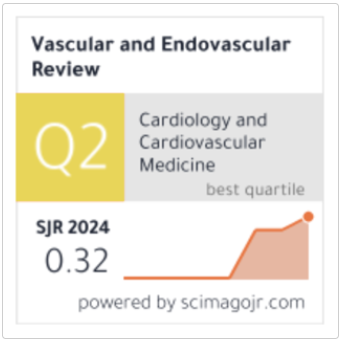Oxygen-Sensing Proteins and Arterial Stiffness: A Narrative Review
Keywords:
Oxygen-sensing proteins; arterial stiffness; hypoxia-inducible factors; prolyl hydroxylase; vascular remodeling; endothelial dysfunction; cardiovascular risk; redox signaling.Abstract
Arterial stiffness has emerged as a robust, independent predictor of cardiovascular morbidity and mortality, reflecting both functional and structural alterations within the vascular wall. While conventional risk factors such as aging, hypertension, diabetes, and dyslipidemia are well-established contributors, recent advances underscore the critical role of oxygen-sensing mechanisms in vascular biology. Oxygen-sensing proteins including hypoxia-inducible factors (HIFs), prolyl hydroxylase domain enzymes (PHDs), heme oxygenases, mitochondrial electron transport chain components, and soluble guanylate cyclase serve as molecular sentinels that detect fluctuations in oxygen tension and orchestrate adaptive cellular responses. These pathways regulate angiogenesis, nitric oxide bioavailability, vascular smooth muscle tone, extracellular matrix remodeling, and inflammatory signaling processes intricately linked to arterial compliance. Dysregulation of oxygen-sensing proteins leads to impaired redox homeostasis, endothelial dysfunction, maladaptive vascular remodeling, and chronic low-grade inflammation, which collectively accelerate arterial stiffening. Moreover, emerging evidence suggests a bidirectional interplay: progressive arterial stiffness impairs oxygen delivery to peripheral tissues, thereby perpetuating hypoxia and further activating maladaptive oxygen-sensing cascades. Experimental studies in animal models, along with clinical investigations in patients with hypertension, chronic kidney disease, diabetes, and chronic hypoxic states, provide compelling insights into these associations. This narrative review synthesizes current evidence on the role of oxygen-sensing proteins in the pathophysiology of arterial stiffness, bridging mechanistic understanding with translational perspectives. Special emphasis is placed on molecular crosstalk between HIF signaling, mitochondrial function, and vascular remodeling. Furthermore, we discuss potential therapeutic avenues, including pharmacological modulation of HIF pathways, enhancement of nitric oxide signaling, and strategies targeting mitochondrial dysfunction, which may offer novel opportunities to attenuate arterial stiffening and reduce cardiovascular risk. By integrating experimental and clinical insights, this review highlights the promise of oxygen-sensing proteins as biomarkers and therapeutic targets in vascular aging and disease.








